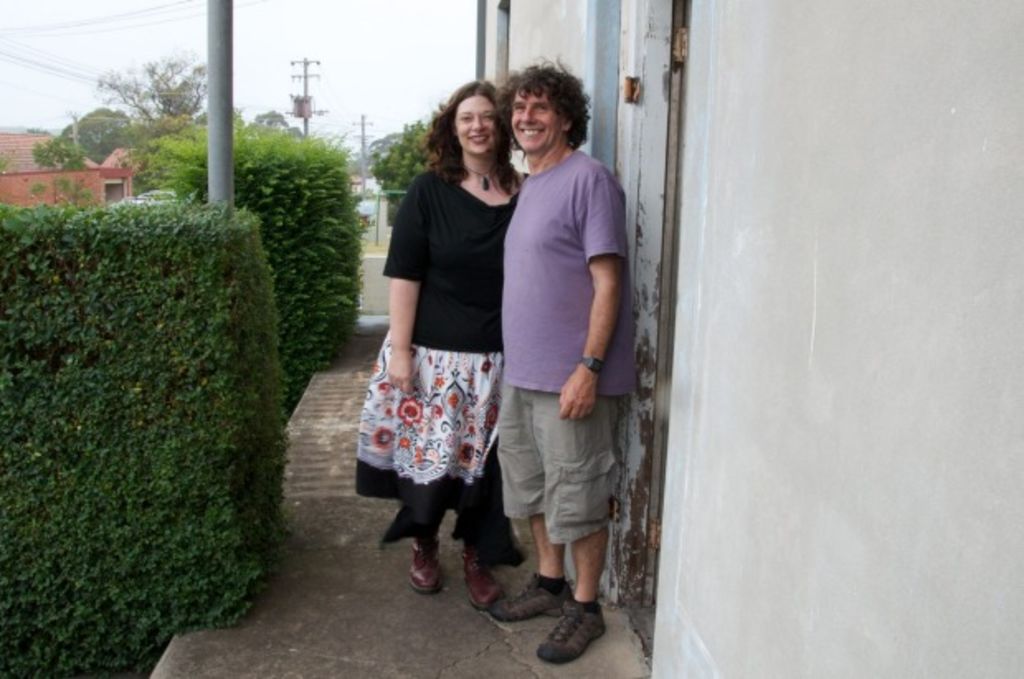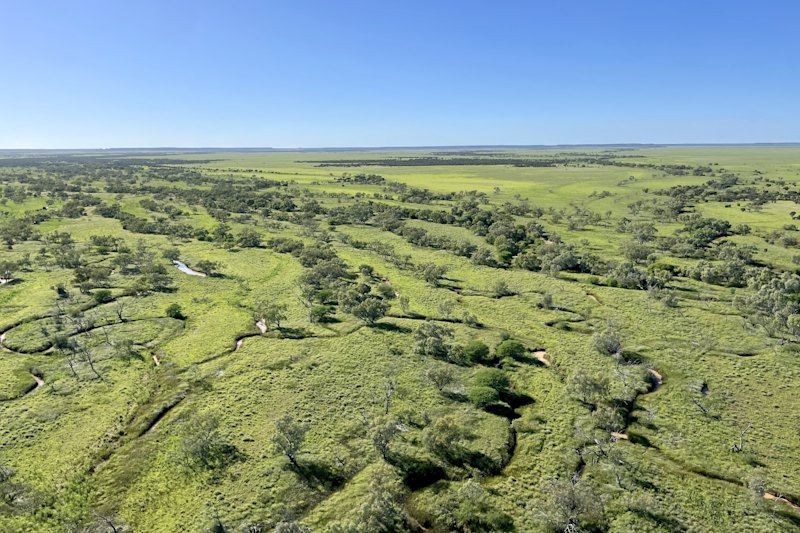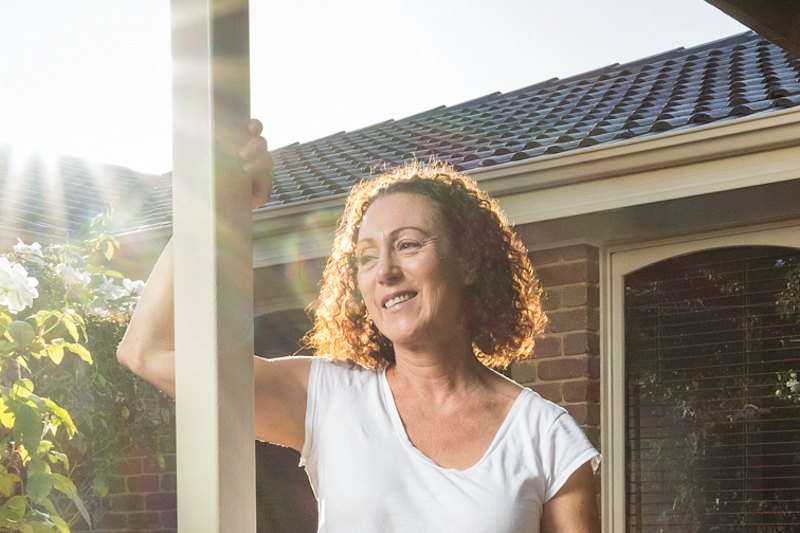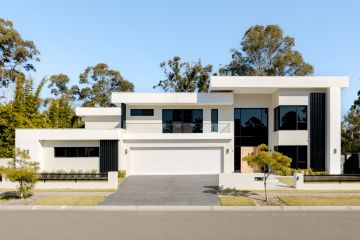Meet the Australians addicted to restoring heritage houses

Anne and Andrew Wallace, New South Wales
Anne and Andrew Wallace have restored three houses including their current home – a 1930s timber cottage bought for just $4000 through the local paper.
“We took the roof off, cut it in half and relocated it 20 kilometres to the beachside village of Old Bar where we reassembled it, and built a Cape Cod style attic on top,” Mrs Wallace says.
“The contractors offloaded each half with a crane and when they put it together the tongue and groove floorboards that ran the length of the house clicked back into place.”
Renovations to the structure have involved changing the roof pitch (required after heavy rain during relocation caused the horsehair ceiling to collapse) building a new master bedroom, new bathroom, new parents’ retreat, new attic-style roof complete with dormer windows, and extending the kitchen.
The Wallaces’ most recent restoration project is a turn of the century timber home purchased in 2014 as an investment property.
“Most people would have bulldozed the house but Andy did not have regular work at the time so having a project made a lot of sense,” Mrs Wallace says.
The house is on a 1000 square metre block in Taree, NSW.
“This house had a combustion stove that heated the water, single skin timber slab walls and space for a washing copper over a fireplace in the laundry [and] only two power points in the entire house,” Mrs Wallace says.
Six months and $50,000 in renovations later, the couple were able to let the property for $320 a week.
Their long-term plan is to eventually subdivide and build another house on the block.
“Realising the aesthetic beauty of a neglected property brings me a lot of joy but we would not have chosen the houses we did if we didn’t think the exercise was going to be financially beneficial,” Mrs Wallace says.


The Wallaces’ investment property in Taree.
Marnie Ireland, Victoria
Marnie Ireland and her partner Dale are among the subjects featured in ABC television series Restoration Australia that documents restoration projects countrywide.
Episode four follows the avid home renovators as they take on their biggest project yet – restoring the Gervasoni Homestead.
The heritage listed property in Yandoit, Victoria encompasses three main buildings: the Blacksmiths Villa (completed in April 2015 as a villa and being let bed and breakfast), Granny’s Cottage (completed in October 2015 and the couple’s current home), and The Old Stonehouse (the former Gervasoni homestead) due to be finished in early 2017.
“It’s incredibly rewarding to feel we are the new custodians of these buildings and the hard work and dollars we are putting into the restoration is appreciated by many people with fond memories of times they have spent in them,” Ireland says.
While restoring the Yandoit “ruins” is purely a passion project for the pair, Ireland has also previously been successful in renovating for profit.
“My first place in Richmond was purchased for $300,000 and sold give years later for $660,000…I estimate I probably spent less than $40,000 on the renovation,” Ireland says.
“As this will be our ‘forever’ home, we have probably spent a lot more than you would have if you were intending to sell it straight away…This is a special group of buildings which really deserve some love,” Ireland says.
The couple plans to live in The Old Stonehouse when it’s completed and let both Granny’s Cottage and Blacksmiths Villa as bed and breakfasts.
“We have noticed there are many examples stunningly beautiful old homesteads in quite remote parts of the country which are being left to ruin,” Ireland says.
“It is such a shame to see these formerly glorious buildings disintegrating…sometimes it is a result of different perspectives…where money spent on the house doesn’t necessarily add value to the property overall.”
Restoration Australia is available now on DVD and digital.


Gervasoni Homestead. Image courtesy of Restoration Australia.
Narelle Oehm, New South Wales
Narelle Oehm has been involved in restoring eight homes located across Wagga Wagga, New South Wales.
“The seventh was [originally] built in 1945 which I restored myself…I learnt how to render, plaster and repoint brickwork,” Oehm says.
“I also painted the whole house inside and the majority outside, [but] I had the gutters painted by professional painters,”
Due to the time restraints place on owner-builder licences, Oehm’s eighth property is being restored with the assistance of a builder.
“Owner-builder permits are only allowed every seven years,” Oehm says.
“I am still doing all the organisation – employing tradesman, cleaning bricks, restoring doors and ceilings, repointing bricks, restoring a fireplace and painting.”
All Oehm’s properties have been bought as investments, generating profits of up $100,000 per project.
“I have about four weeks to go on my current renovation. It was a tiny cottage but I have more than doubled the existing size,” Oehm says.
“I added a kitchen, living area, master bedroom, ensuite, walk in robe, bathroom, toilet and laundry…also a large verandah and single garage.”
Although renovating in a country town has its difficulties (lower return on investment and high cost to ship materials compared with metropolitan areas), Oehm says her biggest challenge is overcoming being a woman among a male dominated industry.
“This is an industry which is slowly changing and perhaps in the city it is different but in regional areas it can be tough.”
Oehm’s restoration journey is documented via her blog, The Narelle Oehm Experience.


Narelle Oehm’s current restoration project (four weeks from completion) in Wagga Wagga.
Haydn Pearce, Tasmania
The journey to restore Haydn Pearce’s Hobart property 121 Harrington Street – one of the oldest remaining timber buildings in Hobart – is documented in episode three of Restoration Australia.
The Harrington Street shop has suffered two arson attacks and was on the verge of being demolished before Pearce and his wife Penny brought it back to life.
The property is Pearce’s seventh restoration project.
“The majority of our buildings were bought before properties in Tasmania rose in price and people didn’t put any value on their heritage value, so it allowed us to ‘collect’ some gems,” Pearce says.
While Pearce generally renovates to “keep sane and to preserve buildings”, he has also made significant profits from restoring and reselling homes.
“We purchased a Campbell town cottage for $17,000, spent $40,000 renovating and sold for $200,000,” Pearce says.
Pearce acknowledges the difficulties of restoring neglected homes, particularly those in small cities where more value is placed on the land than the home.
“Most people think that it’s not worth it,” Pearce says.
“It’s even more of a disgrace when the materials [of old homes] are not reused and taken to the tip.”


121 Harrington Street. Image courtesy of Restoration Australia.
Mick Doyle, New South Wales
Emmaville is believed to be the lost birthplace of bush poet and composer Banjo Paterson located in Orange, New South Wales.
The small weatherboard cottage dates back to the 1850s, with Patterson believed to have been born on the property in 1864.
The project was local Mick Doyle’s first restoration attempt, completed with significant support from the surrounding community.
“The building was somewhat rundown – rotted timbers, damaged windows and sunken foundation stumps,” Doyle says.
“Where necessary, timbers were replaced, the frame was strengthened, windows repaired, chimneys replaced and roof iron re-corrugated.”
More than 2000 hours of volunteer time and thousands of dollars were donated to restoring the historical property in time for the 150th anniversary of Patterson’s birth.
“The restoration allowed this building to be in a condition close when it was built,” Doyle says.
It is not suitable to be lived in with no plumbing, electricity or kitchen on the premises.
“Unfortunately, there is sometimes a greater cost to restore than to replace,” Doyle says.
“Some older houses do not suit restoration but may have particular features that can be preserved in an upgraded home.”


Emmaville. Image courtesy of Restoration Australia.
Chloë Constantinides, Western Australia
Creative Director at Dapper Apps Chloë Constantinides has renovated five apartments and two family homes for profit.
“I prefer the lower end of the market as the numbers always seem to work out better and you’ve got a bigger buyer base obviously, [appealing to both] first home buyers and investors,” Constantinides says.
Her first property was a Mayland unit bought for $256,000.
“The agent excused herself and wouldn’t go inside it was that bad,” Constantinides says.
“However, if you can look past that and see that the property has solid bones to work with, that’s what I’m after.”
Following renovations, the property was revalued at $345,000.
“I’ve since used that equity for other properties; this is a great little cash cow.”
Constantinides owns two apartments in Mount Lawley– one of which has just been placed on the market and the other is due for renovations shortly.
“My theory for buying is the uglier, the better. The less other people can see in it, the more value that presents to me,” Constantinides says.
“Older properties have much more personality. There are circumstances where they just aren’t set up for modern life, however, a bit of quirk and character is definitely better than seeing cookie-cutter homes everywhere.”


Inside a property restored by Chloë Constantinides.
Jen Dixon, New South Wales
“Keera Vale” is the first restoration project undertaken by Jen Dixon and her partner Harold.
“Harold built a mud brick house in Wellington, NSW over a five-year period with a good friend in the 1980s, [but] neither of us has restored a property before, certainly not a building that was completed in 1844,” Dixon says.
The project came about by chance when the couple inspected the property on a whim.
“We were completely naïve about the time, money and commitment required, but we loved the welcoming feel the house has, the views and the potential,” Dixon says.
The home has now been changed back to a single dwelling with two rooms completely restored.
“When we moved in the kitchen was burnt out and had been for years, there were ferns growing through floor boards inside, holes in the floors and the windows were boarded or broken,” Dixon says.
“The upstairs and downstairs had been separated by a concrete slab as part of the house being turned into three flats, so to get upstairs required running the weather gauntlet across the backyard and up an external staircase. We were also sharing the ground level with a dynasty of rats.”
The most recent bank valuation of Keera Vale indicated the property is now worth about $200,000 more than it was bought for, with about $100,000 on renovations so far.
“While I am sure everyone would love to think that at the end of all of the hard work there is a rewarding price tag, it has not been the basis of the decisions we have made,” Dixon says.
“Harold wanted to feed his soul by working on the house and I was more captivated by the history of the house and the stories of the families who have lived here before us,”
The couple have used all original methods in restoring Keera Vale, engaging tradespeople who share the same passion for old homes.
“There is a relationship you develop with houses like this that you don’t get with more modern houses and new builds,” Dixon says.
“It does make me sad that there is not more appreciation for the craftsmanship and quality of old houses.”


Keera Vale. Image courtesy of Restoration Australia.
We recommend
We thought you might like
States
Capital Cities
Capital Cities - Rentals
Popular Areas
Allhomes
More







